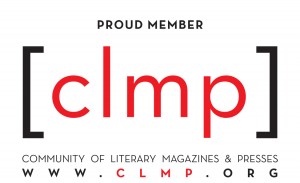by Allisa Cherry
January 24, 2023
Allisa Cherry grew up in a rural community in an irradiated desert in the southwest of the United States. She has since relocated to the Pacific Northwest where she teaches workshops for immigrants and refugees transitioning to a life in the US and recently received her MFA from Pacific University. Her poetry has received Pushcart and Best of the Net nominations and can be found in High Desert Journal, West Trade Review, The Maine Review and Rust + Moth. Work is forthcoming at The Columbia Review.
Judas Goat by Gabrielle Bates; Tin House Press; 104 pgs.; $16.95
Acculturated amongst sheep and cattle, a Judas goat is used in stockyards to lead animals to slaughter while its own life is repeatedly spared. Gabrielle Bates’s profound debut collection of poems, named for this animal, is haunted by its philosophical specter. An illuminated manuscript that studies the relationship between violence and domestication with a persistent and triumphant tenderness, Judas Goat is symphonic in its weaving of religion, sex, the animal kingdom, gendered expectations, the Deep South, a broken covenant between a mother and daughter, and, ultimately, love and marriage.
Judas Goat opens with an intimate scene between the speaker and her partner discussing his day. She comforts him after he recounts a dreadful story of a dog trapped by its leash and dragged by a train through a narrow tunnel. This poem sets the tone of the book and prepares the reader for inevitable moments of crisis and terror contextualized within the necessity of love and duty. But Bates doesn't romanticize these virtues. Very early on, she provides this unvarnished definition of the speaker’s love for her partner: “Of all I could seduce, only you could I imagine// crawling over, crawling beneath/ for close to a century, curious.” In the final poem, “Anniversary,” the poet returns with the reader to a present in which love persists without artifice or obfuscation, with these lines, “When I say he hammered the ring to make it fit/ I mean the ring fits.”
In between these expressions, the reader is reminded in the clearest language that love is often arrived at following great struggle. In “Little Lamb,” one of a series of poems in which domesticated animals are used as a conceit to explore this premise, the speaker/poet is transmogrified into a helpless lamb, a “Dumb, awful, offal-/ soft daughter wobbling/ around the longgone/ space of Mother.” Here, she questions how she can understand herself as safe in her new home, with her mind formed “around the sight/ of a blood drain in the floor?” The speaker’s childhood relationship to her mother is also referenced in poems like “Impermanent.” Bates writes, “as a child I was forced/ to make a show of saying// I love you, day after day/ to a woman with cruel blue eyes.” And in “Effigy,” “Oh yes, they built my mother crudely…” So that when she forays into the sheep conceit again in “Self-Portrait as Provincial” and “When Her Second Horn, the Only Horn She Has Left,” (both of which imagines the speaker locked in a violent battle with a ram) it is easy to read the mother into the conceit. One of the questions the speaker/poet asks at the center of “Eastern Washington Diptych” (and arguably, the collection itself asks) is “Without violence, how do I understand my life as meaningful?” The answer seems to be the redemptive nature of love. “The way I understood it,” Bates writes with clarity in “Mother,” “if the ending was good,// it cast goodness back over the whole.”
What motivates the speaker throughout Judas Goat isn’t always stated so plainly though, as in “[Who Hasn’t Lain in a Yard with Boys]” in which the speaker seems to be alluding to a roll-around with a young man but also seems to be disassociating from the event, lingering on owls and rabbits, baseballs and bats. This poem concludes “Shadows full of bones, full of maybes, breed beneath,/ and the owls don’t betray her/ to anyone in particular.” It's an unsettling and not entirely lucid image. This happens again in “The Mentor'' which begins so strangely with a man chiseling faces into dead cedars. There is an almost biblically euphemized act of violence at the center of this poem that is formative to the speaker’s world view, yet it concludes “When I stopped begging to be believed/ and started telling the truth, no man was there.” At first blush, it may seem Bates is being willfully obtuse, deliberately obscuring meaning for the sake of mystery. But this strategy allows a momentum of meaning to accumulate from poem to poem across the book so the reader gets to experience an arrival of understanding that travels from the thinking brain into the feeling body. Indeed, the poet even gives the reader a peek at her machinations from time to time, most significantly, again in “Mother,” where she states, “The poem must be mess because we love each other.”
This collection can sustain its moments of slippage and veiled meaning in which the actual and mundane is elevated to spiritual mysticism because of the credibility it builds elsewhere through exact description and imagery. For example, the poem “Time Lapse,” which plumbs the complex potential for harm inherent in young sex, begins:
“A hummingbird is pulled like a bull
toward the loudest reds,
lands on the inmost branch to preen
where only I can see
the arching back of her green torso”
This is a crystalline visual that folds neatly into and reinforces the action of the poem. Elsewhere, in “‘Person’ Comes from ‘Mask’” Bates writes “...the summer evening I stood on a porch in Vermont// as a veil of insects caught the last light and dove over a golden field/ before me, bearing it on their backs.” Bates writes with a visual acuity that underscores the importance of space and placement in Judas Goat. And it isn’t just in description and image that Bates is exacting. She deploys various forms with great skill and seems as adept at working in couplets and tercets with thoughtful enjambment as she is loosening her grip where the poem is served by more erratic spacing. The most ambitious experiment in form comes in the side-by-side poems “Ice/” and “/Tithes” which rewards the reader with multiple versions. Read individually and linearly “Ice/” describes a pastoral scene in which a sapling, planted by a father on the night of his daughter’s wedding, is destroyed by deer. The destruction leads the speaker to ponder “What could be/ less permanent/ than being only/ a daughter to men.” Running adjacent to “Ice/” “/Tithes,” is a spare, parenthetical piece about skating on a frozen pond. The risk in this poem, the grinding rhythm of the skate’s blades, the cuts they make, and cold depth below the ice, is reinforced by the poem’s silent white spaces. “/Tithes” concludes “[balancing a cotton tuft on the/ tongue, for just one more hour],” mirroring the sentiment of impermanence and fragility expressed in “Ice/.” Read together, the two poems move back an forth between two separate but connected considerations of risk buried in a seemingly bucolic setting. The structure of the manuscript itself is well thought out. Moving back and forth in time over its four sections and using epiphanies as mileposts, it creates a chronology of meaning rather than events. In fact, the book ends where it begins, in the speaker's present-day love. So, instead of a narrative arc, the ordering echoes some of the book’s major themes in an intellectually fulfilling way in that it creates a circle. Like a sheep pen. Or a wedding band.
There are dozens of reads that time and space won’t allow here. What Bates intends to say about our relationship to the animals we domesticate. How religion can haunt a life without edifying it. How a body can become accustomed to violence, even crave it, and be rewarded with security. How a woman might feel ambivalent to the gender roles assigned to her, yet still choose them. Like all the best collections, Judas Goat contains multitudes and is a book that one could return to over and over without exhausting all of its big and small revelations.
©2023 West Trade Review
__________________________________________________________________________________________________________________________________________________________________________
__________________________________________________________________________________________________________________________________________________________________________
__________________________________________________________________________________________________________________________________________________________________________
__________________________________________________________________________________________________________________________________________________________________________
__________________________________________________________________________________________________________________________________________________________________________
Violence and Domestication in Judas Goat by Gabrielle Bates
POETRY REVIEW
Stay Connected to Our Literary Community. Subscribe to Our Newsletter




